World’s 10 greenest cities
At this juncture, top-10-list has conducted a survey to check out which are the ‘greenest’ cities of the world. The main criterion of selection being the carbon dioxide emission levels. The city with the least CO2 emission has been named the greenest city.
Unfortunately, however, no Indian city makes it to the list. So find out which are the world’s 10 greenest cities. . .
1. Calgary
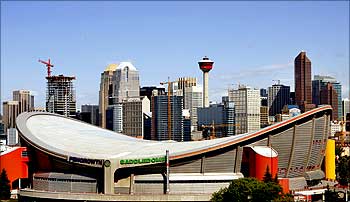
Calgary, the largest city in the Province of Alberta, Canada, has been named the greenest city in the world. It is a popular winter destination possessing a number of major mountain resorts near the city and metropolitan area.
Economic activity in Calgary is mostly centred on the petroleum industry though agriculture, tourism, and high-tech industries also contribute to the city’s financial growth.
The city has an excellent transportation system, consisting of rail as also a well-planned grid system to deal with traffic congestion. Even though it has many industries, the climate and efficient administrative measures have kept the pollution levels very low.
2. Honolulu

Honolulu is the capital of and the most populous census-designated place in the US state of Hawai. It is the world’s second greenest city.
Honolulu has a warm semiarid climate according to Koppen classification, and enjoys warm weather and plenty of sunshine throughout the year. Despite its location in the tropics, the climate (temperature, precipitation and humidity) is moderated by Hawaii’s mid-ocean location.
The industries located in this region are very light and non-polluting. An excellent bus transit system, has decreased the exhaust and traffic fume levels. The proximity to the ocean also helps keep the city clean.
3. Helsinki
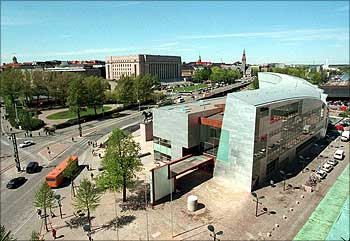
A fairly large city, Helsinki the capital of Finland, is the least polluted city in Europe. The population of the city is 579,016 (as on June 30, 2009), making it the most populous municipality in Finland. The foreign-born population stands at around 10 per cent.
Helsinki has been ranked 3rd among the world’s greenest cities.
The citizens take pride in keeping the city clean and pollution free. Their light rail commuter system is very popular, and the use of cars and other vehicles is kept to the minimum.
4. Ottawa
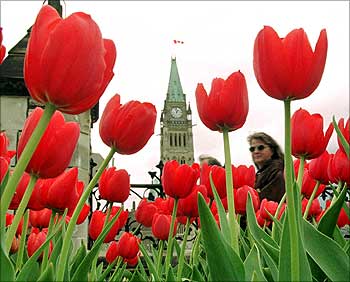
The second city from Canada to make it to the list of the Top 10, Ottawa — at rank 4 — has one of the best volunteer programmes to keep the city green and clean.
Ottawa has a humid continental climate (Koppen Dfb) with a range of temperatures from a record high of 37.8 C (100 F), recorded on July 4, 1913, to a record low of -38.9 C (-38 F) recorded on December 29, 1933, the fourth coldest temperature recorded in a capital city (after Ulaanbaatar, Mongolia; Astana, Kazakhstan and Moscow, Russia).
This extreme range in temperature allows Ottawa to boast a variety of annual activities — most notable being the Winterlude Festival on the Rideau Canal in the winter and the National Canada Day celebrations on Parliament Hill in July.
During their Spring Cleaning the Capital month between April 15 and May 15, over 60,000 volunteers are present to clean the parks, roads and sidewalks etc of the city.
Like other green cities, Ottawa residents rely on a good light rail transport system to commute, thereby reducing the fumes in the city.
5. Minneapolis

Minneapolis is the largest city in the US state of Minnesota. The twin cities of Minneapolis and St. Paul have made cleanliness and environmental friendly policies the hallmark of their administration.
Minneapolis has a continental climate typical of the Upper Midwest. Winters can be cold and dry, while summer is comfortably warm although at times it can be hot and humid.
Along with the good rail systems, the administration emphasises on bike riding, which keeps the city green and pollution-free.
6. Oslo
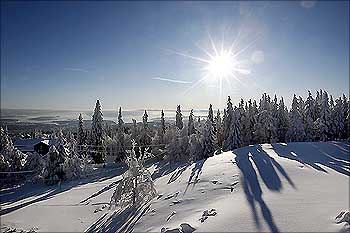
Oslo is the cultural, scientific, economic and administrative centre of Norway. The city is also a hub of Norwegian trade, banking, industry and shipping. It is also the sixth greenest city in the world.
City developers have made the environment one of their primary concerns.
From 2010, they are planning to start buses which run on fuel generated from human waste.
They also have a public bicycle rental programme, where riders can access bikes from over 90 stations in the city.
7. Stockholm

Stockholm is the capital and largest city of Sweden.
As of 2008, the Stockholm metropolitan area was home to approximately 21 per cent of Sweden’s population and contributed to 35 per cent of Sweden’s gross domestic product. Stockholm is also the most populous city in Sweden.
The Swedes have been in the forefront in the conversion from fuel guzzling cars to hybrids. About 5 per cent of the cars present in Stockholm are hybrid versions.
The city also has very little heavy industry in or around it. Like in all other green cities, the public transportation systems are clean and efficient.
8. Zurich
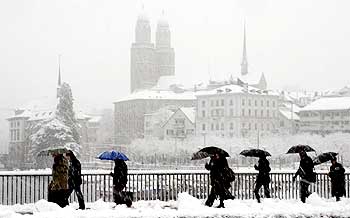
Zurich is the largest city in Switzerland. The city is Switzerland’s main commercial and cultural centre and sometimes called the cultural capital of Switzerland, the political capital being Berne.
Zurich can be counted as one of the world’s pre-eminent global cities. According to several surveys from 2006 to 2009, Zurich was named the city with the best quality of life in the world. It has also been named the wealthiest city in Europe.
This is another city that uses multiple pu public transport systems as good alternative to private cars. This decreases the number of polluting vehicles on the road.
9. Katsuyama

Katsuyama is located in Fukui, Japan. It is ranked number 9 in the list of the top 10 greenest cities in the world.
With a population of only 30,000 and a total area of only 253.68 sq. Km., Katsuyama is the smallest city on this list. Tourism being its main income, there is a tremendous amount of effort being made to keep the city green.
The city was founded on September 1, 1954.
Katsuyama was the ninth-best ranking city in a ranking that compared health and sanitation in cities around the world published in April 2007.
10. Berne
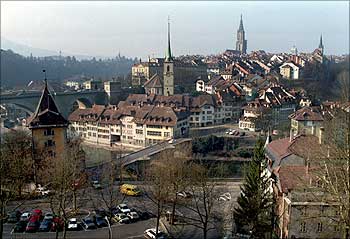
The city of Bern or Berne is the Bundesstadt (federal city, de facto capital) of Switzerland, and, with 122,658 people, the fourth most populous city in Switzerland.
There are a number of initiatives which have been taken by the city council to maintain its pristine cleanliness and its environmentally friendly reputation.
The historic center of Bern has been featured in the list of UNESCO World Heritage Sites since 1983, and Bern is among the world’s top ten cities for the best quality of life.
Source : Rediff

